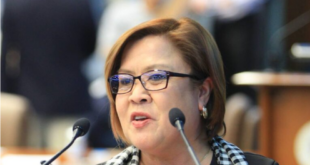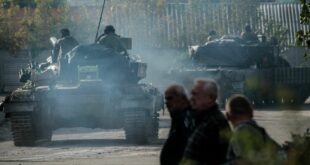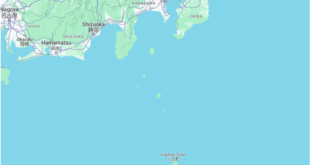3 different ways to interpret Vote Compass data on values, policy preferences and self-identification.

Tens of thousands of Albertans have used the Vote Compass online tool since the 2023 election campaign began, and the opinions they’ve provided paint a vivid political picture of the province.
Vote Compass asks users a series of 30 questions about their fundamental beliefs, policy preferences and views of political leaders.
The answers to those questions are used to create a customized profile for each individual user, showing them where they sit on the political spectrum relative to the major parties.
Taken together, all those answers also provide enough data to compare different parts of the province, to see how opinions vary. There is now enough data to compare each of Alberta’s 87 electoral ridings.
Some of the results probably won’t surprise you, such as the fact that people in urban areas tend to hold more progressive/left-wing opinions, while those in rural Alberta tend to have more conservative/right-wing viewpoints.
But there is some interesting variation in that general theme. Pockets of progressive views are present in rural areas, while some ridings in the province’s biggest city rank among the most conservative in the province.
There are also different ways to look at the Vote Compass data, which can help tease out some of the nuance in people’s opinions that inevitably gets lost when you lump so many different opinions together.
Below, we’ll present you with three different lenses on the riding-by-riding results.
As Albertans are set to head to the polls on Monday in one of the most closely-contested elections in the province’s recent history, the details in the data may be illuminating for those trying to predict the outcome — or understand it, in retrospect.
Lens 1: Simple, left-right spectrum
The Vote Compass tool, designed by political scientists and statistical experts, uses a complex series of questions and some advanced math to provide users with their individual profiles.
It then allows people to delve even further into their data, to explore the nuances of how their views on a particular issue or policy compare to those of the political parties.
But for the sake of comparing all those complex answers, we have to boil things down.
Vote Compass did that by grouping the responses from people in each of the 87 ridings and then applying some statistical analysis techniques, explained Alexander Beyer, Vote Compass’s lead data scientist.
All that math outputs a final score, on a scale from 0 to 100, which represents whether responses in a given riding tended to fall on the left-wing side of the spectrum versus the right-wing side.
The scores are all relative to one another, so the most left-wing riding in the province ends up with a score of 0, while the most right-wing riding gets a score of 100.
Here’s an interactive list of all 87 ridings’ scores. You can search for a riding by name and you can re-sort the list by clicking on the column titles.
The results vary quite a bit by geography.
Ridings in Edmonton tend to be on the left-wing side of the spectrum, while rural Alberta ridings tend to be more on the right.
Calgary has a mix of both, with many ridings near the middle.
You can explore the geographic variation in the following four maps, which are interactive.
You can zoom in and scroll around to see the smaller ridings in more detail. Tap on a particular riding or run your mouse cursor over it to reveal more information.
Lens 2: Adding another dimension
It bears repeating that the simple, left-right spectrum used for these riding comparisons represents a boiled-down version of the Vote Compass results.
Of course, each individual’s viewpoints, in reality, are much more complicated than that.
Aggregating the viewpoints will always lose some of that nuance, but there’s another way to look at the riding-by-riding differences with a bit more detail — by adding another dimension.
Similar to the way individual Vote Compass results are presented, the following chart shows each riding along two separate axes: a social axis and an economic axis.
A similar scoring system was used for this chart, but there are two scores to consider.
The vertical axis runs from a scale of 0 to 100, with 0 being the most socially conservative and 100 being the most socially progressive.
On the horizontal axis, 0 represents the most economically left-wing and 100 represents the most economically right.
You’ll notice some things on this chart that don’t appear in the simple left-right data.
For instance, Fort McMurray-Wood Buffalo again ranks as the most right-wing riding on the economic axis, but on the axis representing social values it’s actually more progressive than several ridings in Calgary.
You might also have noticed that Taber-Warner — which ranked as the second-most-right-wing riding in the simplified left-right data — actually lands closer to the centre on this chart. It’s still on the the conservative side of both axes, but other ridings are more conservative on one axis or another.
Beyer said this is because the two-dimensional Vote Compass chart incorporates more nuance from people’s responses, including how strongly they agree or disagree with a particular question.
He said the difference in Taber-Warner’s results tell us that, while people in that riding responded “the most” on the conservative side of each question, people in other ridings “have stronger leanings” toward the conservative responses they provided.
Lens 3: Self-reported
The previous two lenses rely on a mathematical interpretation of the 30 questions asked of Vote Compass respondents.
But, as a separate part of its survey, the voter-engagement tool also asks users to provide some information about themselves.
One of those questions simply asks: “In politics, people sometimes talk of left and right. Where would you place yourself on the scale … where 0 is left and 10 is right?”
These self-reported scores are another way of looking at variation between the ridings.
Of course, left and right are relative terms, and might carry different meanings or connotations to different people. What’s considered right of centre to some folks might seem left of centre of others.
With that in mind, here’s how the results break down by riding.
Again, these results are relative to one another and scored on a scale from 0 to 100, so the most self-reported left-wing riding in the province ends up with a score of 0, while the most self-reported right-wing riding gets a score of 100.
You’ll see a lot of similarities — and a few notable differences — in this self-reported list, compared to the first list at the top of this article.
The most left-wing riding is the same on both lists: Edmonton-Highlands-Norwood.
But the most right-wing riding is different.
It’s not Fort McMurray-Wood Buffalo on this list, but rather Peace River where people self-identified as farthest to the right, followed closely by folks in Innisfail-Sylvan Lake.
Fort McMurray-Wood Buffalo ranked as the fourth-most-conservative riding on this self-identified scale, so not a huge difference from the first list, but notable.
Some much larger differences between the two lists can be seen in Calgary ridings.
Differences in self-identification versus policy/belief responses
People in Calgary-West, for instance, were far more likely to self-identify as right-wing than their responses to the Vote Compass questions would suggest.
Based on their self-identification, they ranked as the 16th-most-right-wing riding in the province. Based on their responses to questions about their beliefs and policy preferences, they ranked 61st.
People in Calgary-Bhullar-McCall also saw a large discrepancy. That riding ranked as the 25th-most-right-wing based on self-placement, versus 69th based on Vote Compass responses.
At the other end of the spectrum, people in Calgary-Falconridge were more likely to self-report as left-wing than their responses to the Vote Compass questions would suggest. They ranked as the 28th most left-wing riding based on self-placement, compared to 66th based on their belief and policy responses.
It was a a similar story in Calgary-Cross, which ranked 37th-most-left-wing on the self-identified list, versus 73rd based on their Vote Compass answers.
What accounts for these discrepancies?
“I would say it has to do with how politics are normalized around one’s self,” said Beyer, Vote Compass’s lead data scientist.
“Political socialization does not happen in isolation but in the social context of an individual. So the positions and preferences of family, friends, and folks around you determine your ideological horizon. In a highly liberal neighbourhood, even centrist positions might seem extremely conservative and vice versa. This will be reflected in how people place themselves versus how they place on average, as a whole.”
How the Vote Compass data is gathered and interpreted
Developed by a team of social and statistical scientists from Vox Pop Labs, Vote Compass is a civic engagement application offered in Alberta exclusively by Radio-Canada/CBC. The findings are based on 39,638 respondents who participated in Vote Compass between May 1 and May 23, 2023.
Unlike online opinion polls, respondents to Vote Compass are not pre-selected. Similar to opinion polls, however, the data are a non-random sample from the population and have been weighted in order to approximate a representative sample.
Vote Compass data have been weighted by gender, age, education, household income, region, first language and partisanship to ensure the sample’s composition reflects that of the actual population of Alberta according to census data and other population estimates.
A statistical scaling algorithm was used to reduce dimensionality and translate the responses to the 30 questions include in Vote Compass to one and two dimensions respectively. The single-dimensional representation translates answers to a traditional left-right axis, while the two-dimensional representation translates answers following the methodology used in the results page of Vote Compass.
ABOUT THE AUTHOR

Data Journalist
Robson Fletcher’s work for CBC Calgary focuses on data, analysis and investigative journalism. He joined CBC in 2015 after spending the previous decade working as a reporter and editor at newspapers in Alberta, British Columbia and Manitoba.
*****
Credit belongs to : www.cbc.ca
 Atin Ito First Filipino Community Newspaper in Ontario
Atin Ito First Filipino Community Newspaper in Ontario






